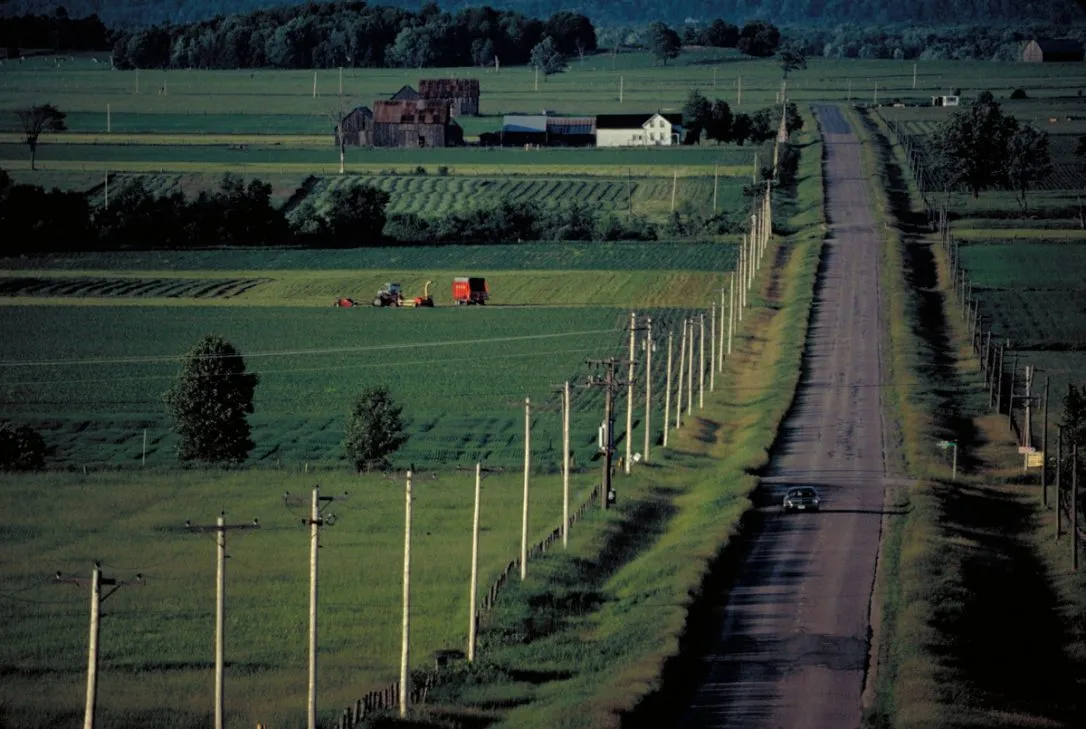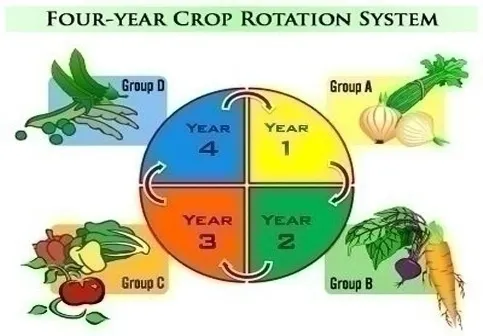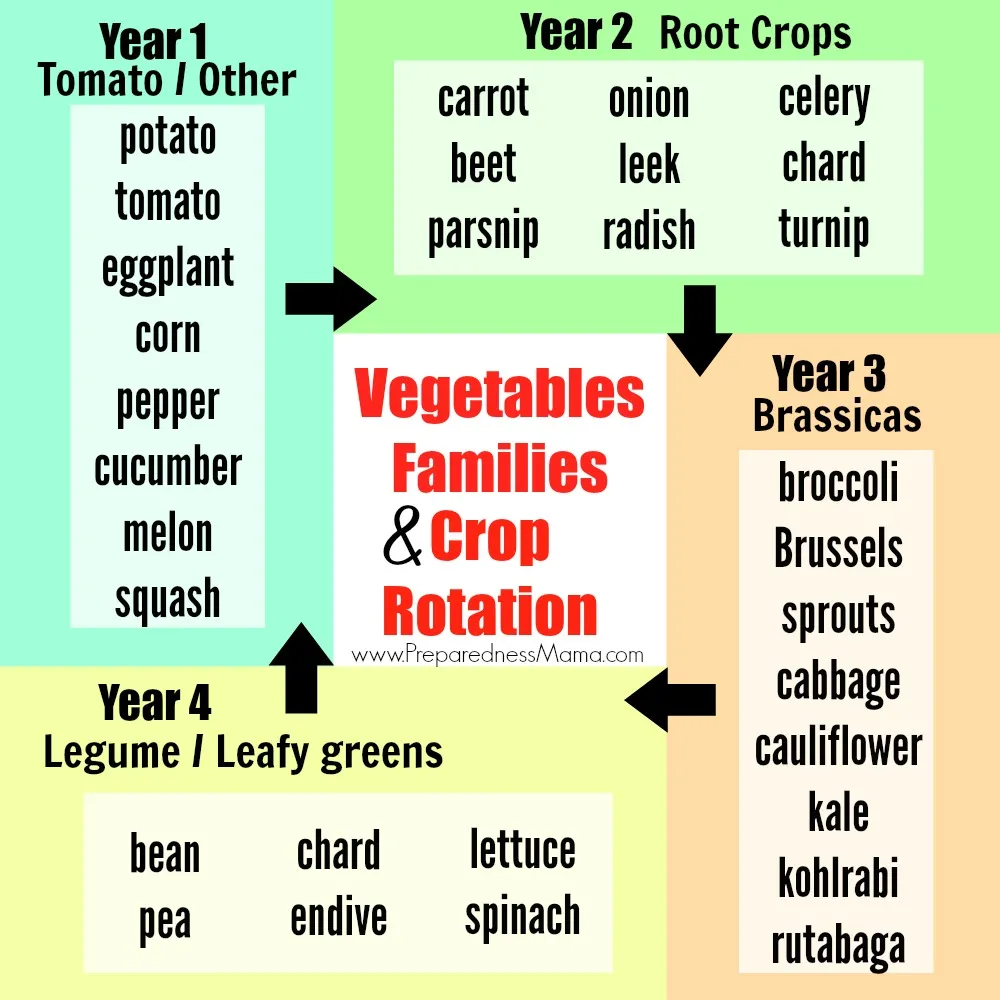Living in a small community relatively a farming community, you see all kinds of unusual things. I was driving past a farm that I have driven past countless times over the years. Now this farm traditionally as far as I knew always grew corn, then yesterday, I had noticed he was growing something different, a grain of some sort. I thought that is strange. So because everybody know's everybody in a small town, I stopped my friend farmer Gerald and inquired as to why he changed his crop. He responded with, I am doing a crop rotation so that I don't have soil erosion. WHAT? So he continued to explain. This post will describe the concept and importance of crop rotation. Follow along to learn more.
This is a picture of one of the roads in my community, and farmer Gerald's farm is the last plot or field in the top of the picture.

First lets define Crop of Plant Rotation. Essentially it is a process that farmers and gardeners alike should not grow the same kind of crops in the same place every year.
"Farmers who practice long-term crop rotation can reduce soil erosion on their land. A study conducted in 1988 found 6 inches more topsoil on an organic farm than on an adjacent conventional farm in the Palouse region of Washington state.
The 7,700-acre organic farm had been managed without the use of commercial fertilizers and with limited use of approved pesticides since its soil was first plowed in 1909. Researchers compared the organic farm’s topsoil to that of a nearby conventional farm. The 1,400-acre conventional farm, first cultivated in 1908, began receiving recommended rates of commercial fertilizers in 1948 and pesticides in the early 1950s.
The difference in topsoil depth between the two farms was attributed to significantly greater erosion on the conventional farm between 1948 and 1985. Researchers attributed the difference in erosion rates to crop rotation because the organic farmer included green manure crops within the rotation plan while the conventional farmer did not." Source: Reganold et al, 1988

Many think that crop rotation is only a practice for large scale field farms, however this is not the case. I personally have 5 raised garden beds, that are large. I rotate my crop between the 5 of them. Some of the beds are in full sun and some are in part sun/part shade, which makes it harder to rotate. In the case where I cannot rotate in that bed the appropriate crop for the sun/shade, I will leave the bed fallow. Fallow is concept of leaving fields unplowed in rotation––when a field lies fallow, the soil regains nutrients that are sucked up by over-planting. I tend to rotate my crop every 2 years, with one 2 of my raised beds I rotate every 3 years.
I follow a chart similar to this one.

The thing I have learned doing this, is that some of my crops do amazing one year compared to other years, when rotated. Some crops are heavy feeders that deplete garden soils while other crops are light feeders and others even help to build soil health. Crop rotation is done to ensure that the pests which grow on a particular crop are reduced in number. Also, it ensures that particular plant diseases will also not develop as a result of poor vegetable plant crop rotation.
So there you have it folks, some of the reason's why we rotate our crops, and some suggested charts to use, for rotating your plants. Hope this was helpful. If you have suggestions in how you rotate your crops please do share and spread the knowledge.
Happy Trails
Image Sources:
https://www.vegetablegrowing.co.uk/start-vegetable-crop-rotation.html
http://preparednessmama.com/crop-rotation-by-vegetable-families/
https://cefs.ncsu.edu/resources/organicproductionguide/croprotationsfinaljan09.pdf